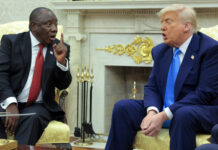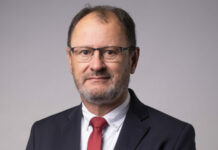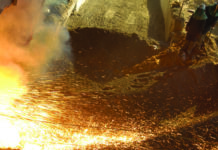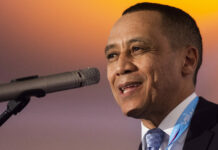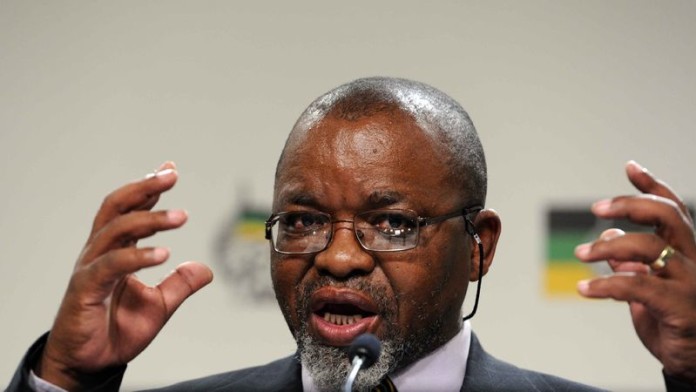
STATS SA’s first quarter 2025 GDP data quietly confirms South Africa’s ongoing collapse as a global exploration destination. Real capital formation in mineral exploration in 2024 was R779.5m – the lowest in the dataset going back to 1993, and less than half the figure when Minister Gwede Mantashe took office in 2018.
In 2018, exploration gross fixed capital formation (GFCF) was R1.6bn (in constant 2015 rands). Every year since, the number has declined – a 52% real-terms collapse under Mantashe’s tenure.
Yet, every year since 2019, the same claim has been made from the podium at Mining Indaba and other conferences: South Africa intends to increase its share of global exploration budgets from under 1% back to the 5% of 2003/4 – in the next five years.
But the timeline keeps resetting. First it was 2019–2024. Then 2020–2025. Then 2022–2027. The 2022 Exploration Strategy echoed the same “1% to 5% in three-to-five years” ambition – but it has since become a dead rubber.
The strategy exists, technically, but carries little political momentum. It now appears subordinated to the more fashionable Critical Minerals strategy. Yet, since we are still below 1%, the target date, if it even matters anymore, must now be at least 2030. Which means any new discoveries will likely be brought into production somewhere after 2045.
The government’s own numbers expose the 5% aspiration for what it always was: a policy fever dream. When Mantashe made the first announcement in 2019, South Africa was already on the ropes. Our share of global exploration budgets had plunged from 35% of Africa’s in the early 2000s to just over 8%.
Mantashe inherited a broken department, but the idea that he “fixed” it was always more PR, than reality. When he took over, Minerals and Energy were still separate departments. He kept almost all of Minister Zwane’s Free State appointees and froze nearly all new appointments and procurement for over 18 months while merging the departments. The result? Rights applicants arrived not just with paperwork, but with printer toner and paper – just to keep the gummed-up bureaucracy moving.
Under Mantashe’s watch, exploration investment has deteriorated further. And the trust deficit has deepened. South Africa hasn’t just underperformed globally – it has underperformed its less well-endowed African peers. While countries like Côte d’Ivoire and Namibia enacted reforms and attracted capital, we offered rhetoric and paralysis. The question isn’t whether we failed to meet the 5% target. It’s whether those tasked with achieving it ever truly intended to.
A new low
And here we are in 2025, with a new record low. Only R779m was spent last year to find the mines of the future. That wouldn’t even fund one mid-tier Canadian company’s drilling season. Meanwhile, the backlog of applications of various types sits in the region of 2,500. The long-promised cadastre system remains offline.
The Minister did establish a R400m multi-year exploration fund. Some black-owned exploration companies have received funding, though details are scarce. It’s real money to recipients and likely well-intentioned – but in a sector requiring R6–R8bn per year, it’s a drop in the ocean.
South Africa’s exploration crisis is not technical or geological. It is political and administrative. And many of those presiding over it are not merely overwhelmed or under-resourced – they are not honest actors. Rights go to insiders. Work programmes are unenforced. Applications vanish into the shadows unless “helped along”. This isn’t just dysfunction. It’s institutional capture by inertia, favours, and quiet corruption.
There is no trust in the department or the licensing system it administers. Policy is anything but consistent – except for the ever-tightening transformation screws. And there is no accountability when the DMRE fails to process rights or grants them to parties with neither the intention nor the capital to drill a single hole. Even the “use it or lose it” rule is ignored.
The idea that we can grow exploration without first reversing policies that serve to steadily erode the potential for investor returns – and without restoring institutional credibility – is not just wishful thinking. It’s a feverish hallucination.
This year’s Indaba was meant to be the turnaround moment. The President had chosen to speak – a sign that perhaps mining reform would be taken seriously. In the end, he cancelled, and Mantashe delivered the keynote. And once again, the same line was dusted off: “We aim to reach 5% of global exploration spend.” It’s now 2025.
South Africa deserves better. But real reform likely now requires an entirely new generation of pragmatic politicians willing to grasp the nettle. The incumbents appear both ideologically entrenched – paralysed when action is needed – and ineffectual when they do try to act. Just think the on again, off again BEE requirements for prospecting rights.
Yet they remain firmly in place.
The numbers are in. This isn’t just stagnation. It’s collapse. And it’s time we stopped pretending otherwise.





